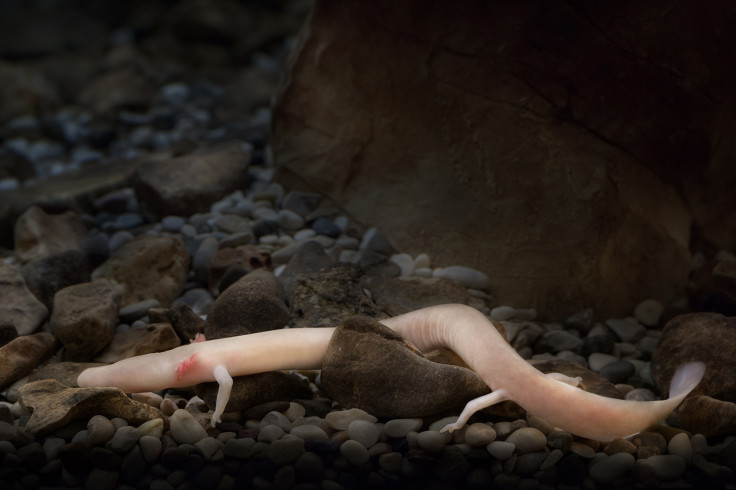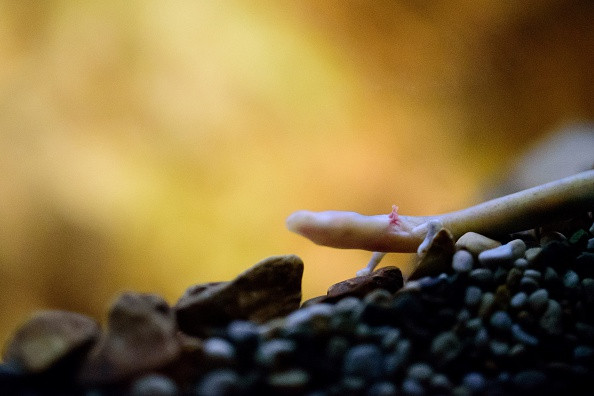Postojna Cave: Slovenian 'dragon' hatches from rare clutch of olm eggs
A rare form of cave-dwelling amphibian has hatched in Slovenia's Postojna Cave on Wednesday (1 June 2016). The mysterious species, known as olms, has captured people's imaginations for centuries, with many saying its strange elongated appearance makes it look like a dragon.
The egg-hatching is an extremely unusual event as olms may only breed as little as once every decade.
Ever since the eggs were discovered in the cave in January, there has been renewed interest in visiting it, with thousands of tourists queuing up to get a glimpse of the unique phenomenon.
In total, 52 eggs were laid by a female olm in the aquarium of the cave, but only about 20 were deemed viable to potentially hatch.
In the wild, scientists estimate that on average, only two baby olms successfully hatch from every 500 eggs produced.
Amphibian, not dragon
Olms have long populated Slovenia's folklore. In the 17th century, naturalist Johann Weikhard von Valvasor descended on Postojna Cave, where he discovered the species. Amazed by their strange appearance, he described them as the last descendants of dragons – this image has stuck and became part of Slovenian legend.

Of course, olms are not related to legendary fire-breathing creatures, which are the stuff of myths and legends. They are, in fact, the largest cave-dwelling amphibians on Earth and the only cave-dwelling vertebrates in Europe.
They live exclusively in the underwater caves of southern European lakes and rivers, and may have been inhabiting Postojna Cave for millions of years. Growing up to a foot long, these blind creatures are also known for their pale pink skin, which is translucent enough for their organs to show through.

Olms reach maturity after 15 years – a relatively young age, when you consider that they can live for 100 years. It is equally impressive that they can go for a decade without feeding.
Biologists hope that the hatching of these olm eggs would shed a light on the species, which is listed as vulnerable by the IUCN Red List of Threatened Species. This is because the increasing pollution of subterranean waters and the human impact on their underground ecosystems has reduced the number of living olm specimens reaching more advanced ages.
© Copyright IBTimes 2025. All rights reserved.






















